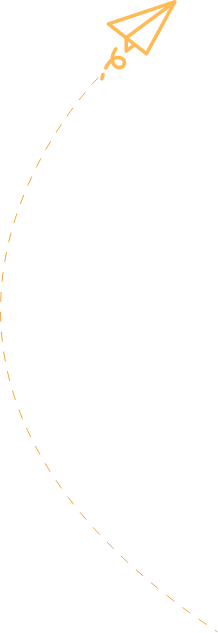
In the ever-evolving world of digital marketing, the success of a business often hinges on the effectiveness of its online presence. One crucial element in this equation is the landing page – the webpage that serves as the destination for potential customers after they click on an advertisement or a promotional link.
Defining the Landing Page
A landing page, also known as a “strona docelowa” or “strona lądowania”, is a singular, focused webpage designed to achieve a specific goal, such as generating leads, driving sales, or capturing email subscribers. Unlike a traditional website, which often contains a broad range of information and navigational links, a landing page is laser-focused on a single call-to-action (CTA).
The key difference between a landing page and a standard website is that a landing page eliminates distractions and guides the user towards a specific conversion goal. By removing extraneous elements and providing a clear, compelling path to action, landing pages can significantly increase the chances of a visitor taking the desired step, whether that’s filling out a form, making a purchase, or downloading a resource.
The Anatomy of a Successful Landing Page
Crafting an effective landing page involves a careful balance of content, design, and technical considerations. Let’s delve into the essential elements that contribute to a high-converting landing page:
1. Defining the Goal and Target Audience
Before you even begin designing your landing page, it’s crucial to clearly define the specific goal you want to achieve. Is it to generate leads, promote a product or service, or encourage sign-ups for a newsletter? Knowing your objective will guide the rest of the landing page’s development.
Additionally, it’s important to understand your target audience. Who are the people you’re trying to reach? What are their pain points, needs, and desires? Developing a buyer persona can help you tailor the messaging, design, and offers to resonate with your ideal customers.
By answering key questions about your target audience, you can craft compelling content and calls-to-action that speak directly to their interests and motivations.
2. Crafting Compelling Content
The content on your landing page is the backbone of its effectiveness. Using the language of benefits, your copy should clearly communicate the value proposition and address the specific needs of your target audience. Leverage techniques like “laddering” to uncover the deeper emotional drivers that guide your customers’ decision-making.
Consider incorporating elements of social proof, such as customer testimonials, logos of trusted partners, or statistics demonstrating your product’s or service’s success. These elements can help build trust and credibility, addressing any lingering doubts or objections your visitors may have.
3. Designing for Conversion
The visual design of your landing page plays a crucial role in its overall effectiveness. Keep the layout clean and uncluttered, with a clear hierarchy that guides the user’s attention towards the desired conversion action. Ensure that the call-to-action (CTA) button is prominently displayed, preferably above the fold (the portion of the page visible without scrolling).
Pay close attention to the length of your landing page. While there is no one-size-fits-all solution, research suggests that landing pages between 1,000 and 3,000 pixels in height tend to generate the highest conversion rates. However, the optimal length may vary depending on the complexity of your offering and the level of information required to convince your visitors.
Incorporate visually appealing and relevant imagery that supports your value proposition. But be mindful of the impact these elements can have on page load speed, as slow-loading pages can significantly impact conversion rates.
4. Optimizing the Technical Aspects
While the content and design of your landing page are essential, the technical implementation can make or break its performance. Ensure that your landing page loads quickly, as page speed is a critical factor in user experience and conversion rates. Use tools like Google PageSpeed Insights to evaluate your page’s load time and identify areas for improvement.
Additionally, make sure your landing page is mobile-friendly and responsive, as an increasing number of your visitors will be accessing it from their smartphones or tablets. A poorly optimized mobile experience can result in high bounce rates and lost opportunities.
Integrate the necessary tracking and analytics tools, such as Google Analytics and conversion tracking pixels, to monitor the performance of your landing page. This data will be invaluable in identifying areas for optimization and improvement.
Continuous Testing and Optimization
The journey of creating a successful landing page doesn’t end with the initial launch. Ongoing testing and optimization are crucial to ensure that your landing page is continuously performing at its best.
Experiment with different variations of your landing page, such as alternate headlines, CTAs, or even the overall layout and design. A/B testing can help you identify the elements that resonate most with your target audience and drive the highest conversion rates.
Regularly analyze your landing page’s performance metrics, including conversion rates, bounce rates, and user engagement. Use these insights to make informed decisions about how to refine and improve your landing page over time.
Leveraging AI-Powered Tools
In the ever-evolving landscape of digital marketing, the use of artificial intelligence (AI) has become increasingly prevalent in the creation and optimization of landing pages. Tools powered by AI can assist in various aspects of the landing page development process, from content generation to design and testing.
Platforms like ChatGPT can help you quickly generate and refine landing page content, such as headlines, calls-to-action, and even product descriptions. By tapping into the capabilities of AI, you can streamline the content creation process and ensure that your messaging resonates with your target audience.
Additionally, AI-powered tools can help with the design and layout optimization of your landing page, suggesting color schemes, typography, and other visual elements that are proven to enhance conversion rates.
Conclusion
In the ever-evolving world of digital marketing, the landing page has become a critical component in the quest for customer acquisition and retention. By mastering the art of crafting high-converting landing pages, you can significantly improve your website’s performance and drive meaningful results for your business.
Remember, the key to a successful landing page lies in a delicate balance of well-defined goals, compelling content, captivating design, and robust technical implementation. Continuously testing and optimizing your landing page, while leveraging the power of AI-driven tools, will help you stay ahead of the curve and maximize your online marketing efforts.
Invest the time and resources necessary to create a landing page that truly resonates with your target audience, and watch as your lead generation, sales, and customer engagement soar to new heights. The team at Stronyinternetowe.uk is here to guide you through every step of the landing page creation and optimization process, ensuring your online presence shines brighter than ever before.





